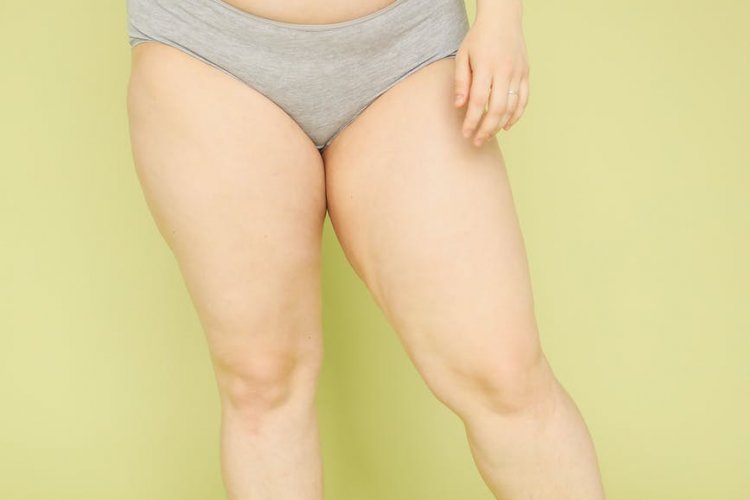How Often Can I Repeat A Chemical Peel

You finally took the plunge and got a chemical peel, and now you feel all over the place with mixed emotions: your skin is glowing and looks healthy like a newborn. You are also pondering questions like, “When is the time to do this again?” Or even worse, you might be already spotting dullness signs coming back slowly and thus, you feel the urge to schedule your next appointment right away.
On the one hand, excessive treatment can lead to more issues than benefits; on the other hand, if you wait too long, you might miss the skincare benefits of the treatment you wish for. In the following article, we will clarify how often a chemical peel can be reapplied with safety according to the type of peel, skin goals, and dermatologist recommendations. Let us start!
What Is a Chemical Peel and How Does It Work?

A chemical peel is a dermatological procedure that removes the topmost layers of skin using a chemical solution prepared according to the patient’s specific needs. Basically, it is like a very strong one-time exfoliation of the skin, which goes far beyond any daily-skin care routine scrub, and it very commonly deals with everything from dullness and uneven skin texture to acne scars and fine lines.
The chemical solution, which could be a combination of the different acids, glycolic acid, salicylic acid, lactic acid, or trichloroacetic acid etc., depending upon the strength of the peel is applied to the skin. It then works to dissolve the dead skin cell bonds, eventually leading them to fall off in the coming days. The whole process then goes on to constantly renew the skin of its natural healing mechanism thus allowing the fresh, soft, and uniformly colored skin below to take its place.
Types Of Chemical Peel

Not all chemical peels are formulated with similar concentrations, but each type is designed to target different skin concerns and penetrate the skin at varying depths. Here’s a breakdown of the three main types of chemical peels:
1. Superficial Peels (Light Peels)
These peeps cause a certain effect on the outermost layer of your skin, which is called epidermis. These kinds of peels also cause minimal downtime, as they are quick and behave gently on your skin. The superficial peels work best for regular skin maintenance and provide you with a visible glow.
2. Medium Peels
They penetrate deeper, reaching the middle layers of the skin, which is the upper dermis. They are a little more efficient and gives you more noticeable results within a week of recovery. These peels are best for treating hyperpigmentation or melasma issues.
3. Deep Peels
Deep peels penetrate the lower dermal layers and offer the most intensive results. However, they also come with the longest downtime and a higher risk of side effects. These peels are typically done once in a lifetime and should only be performed by experienced professionals under strict supervision.
4 Ideas to Give Your Online Beauty Store a Makeover
Why Frequency Matters For The Chemical Peel
The skin heals itself naturally, going through a healing cycle of around 28 days for most adults. Chemical peel Dubai is a treatment that requires the skin to go through the shedding of the damaged cells, and the repair, and then creation of the new and healthy tissue that follows. If one tries to go for another peel treatment too soon, it may disrupt this whole process leaving the skin weaker and more prone to irritation.
Getting peels too frequently and in large amounts can remove the skin’s outermost layer along with its protective barrier, thus resulting in skin problems such as inflammation, roughness, higher susceptibility to irritants, and even permanent damage like discoloration or visible blood vessels. Besides, the building of collagen, the major protein responsible for skin’s firmness and elasticity, is a slow process after deep skin treatments. Providing your skin enough time to recover makes sure you’re truly stimulating collagen production rather than inhibiting it.
Key Factors That Influence How Often You Can Repeat a Peel
Timing your chemical peels correctly allows your skin to fully heal, regenerate collagen, and reveal the long-term benefits you’re aiming for. Here are some important key factors that influence repeating the chemical peel:
1. Nature of Chemical Peel
The types of chemical peel you’re using highly reflect your treatment outcomes. Lighter peels are usually done every 2-4 weeks, whereas the deeper level peels may be needed once or twice
2. Skin Type and Sensitivity
The proficiency of Chemical Peels directly depends on certain skin types, as oily and firmer skin may bear peels more effectively. Those having darker skin complexion need to be careful to avoid hyperpigmentation.
3. Skin Concerns and Goals
Your treatment plan depends on what you’re trying to achieve. Acne-prone skin might benefit from regular light peels, while targeting deep wrinkles or scarring may require less frequent but more intensive treatments.
5. Professional vs. At-Home Peels
In-office chemical peel treatment is typically stronger and requires more downtime between sessions. At-home peels, which are much milder, can often be used more regularly, but even these need to be used with caution and not overdone.
6. Post-Peel Aftercare
Taking good and proper care of your skin will positively impact your recovery and results. Complete hydration, dermatologist-recommended precautions, and avoiding strong chemicals can prove helpful.
How to Choose the Right Cosmetic Packaging for Your business?
How to Safely Maintain Results Between Peels
You don’t need to rely solely on chemical peels to keep your skin glowing. In fact, what you do between treatments plays a huge role in maintaining and even enhancing your results. Here’s how to care for your skin safely in between peels:
1. Stick to a Gentle Skincare Routine
Use a mild, hydrating cleanser and avoid harsh scrubs or exfoliants. Your skin needs time to rebuild its natural barrier, so focus on nourishing and soothing ingredients.
2. Prioritize Moisture
Hydrated skin heals faster and looks more radiant. Use a rich moisturizer with ingredients like hyaluronic acid, ceramides, or glycerin to keep your skin plump and balanced.
3. Never Skip Sunscreen
Your skin is more sensitive to the sun after a peel, even weeks later. Daily use of a broad-spectrum SPF 30 or higher protects against sun damage and prevents hyperpigmentation from returning.
4. Use Antioxidants
Incorporate serums with vitamin C or niacinamide to support collagen production and defend against environmental damage. These ingredients help extend the glow from your peel.
Conclusion
In your skincare process, chemical peels can be a significant and effective method to get rid of skin’s roughness, darkness and aged appearance, thereby rejuvenating the skin. To maintain the skin’s best condition through the time of treatments, application of sun protection, and gentle, antioxidant-rich routine is recommended. Also, before your next session, be certain that you are selecting a practitioner who uses safe and high-quality products.
At Halcyon Aesthetics, we specialize in delivering some of the best chemical peel procedures, modified to your unique skin needs. With expert care, medical-grade products, and a focus on skin health first, it ensures your peel delivers visible, lasting results, safely and effectively.
The post How Often Can I Repeat A Chemical Peel appeared first on Entrepreneurship Life.




















:quality(85):upscale()/2023/09/18/918/n/1922398/a1136b676508baddc752f5.20098216_.jpg)
:quality(85):upscale()/2025/10/09/670/n/1922283/00b944c868e7cf4f7b79b3.95741067_.jpg)
:quality(85):upscale()/2025/10/15/765/n/1922398/29c37a6e68efd84bb02f35.49541188_.jpg)
:quality(85):upscale()/2025/09/09/891/n/1922283/7222624268c08ccba1c9a3.01436482_.png)





















